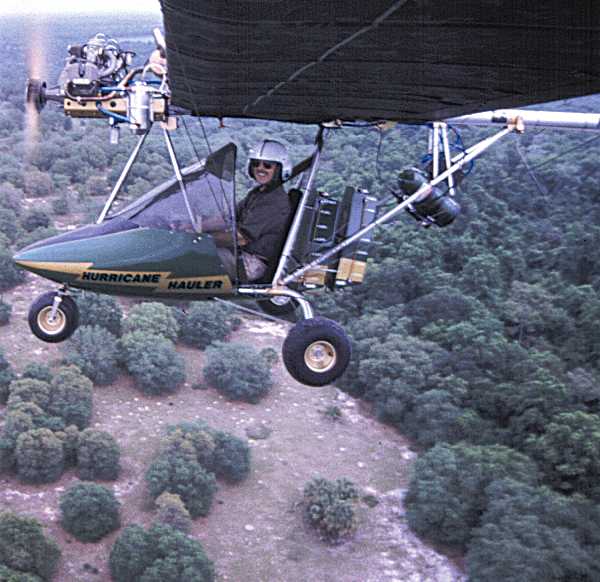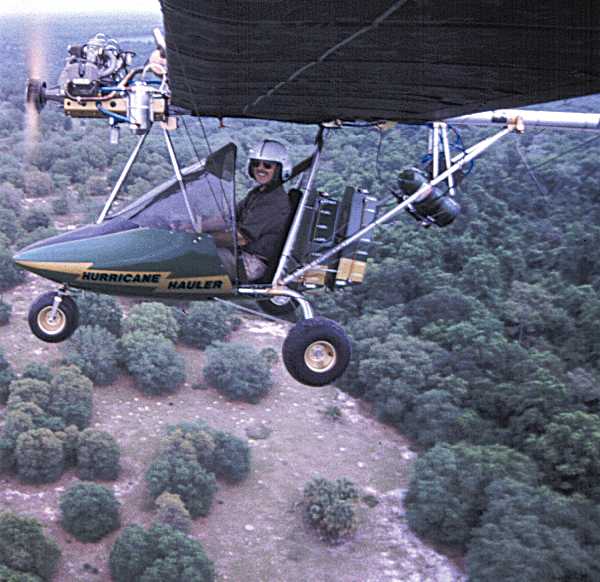
Last year, the 60-hp HKS 700E 4-cycle engine burst on the ultralight scene with more impact than I’ve noted since Rotax established itself as the engine of choice for ultralight enthusiasts. Among those embracing the new designed-for-light-aircraft powerplant was HY-TEK Hurricane, manufacturer of the Hurricane brand. In the years since Mike Kern took over the Hurricane, he has shown savvy about the ultralight marketplace. He was able to see where he could enlarge his potential customer base, and his quick acceptance of the newly-available engine proves this. Despite years of good success with high power-to-weight ratio 2-stroke engines, lots of would-be ultralight buyers remain unconvinced. A Hurricane with a 4-stroke gives HY-TEK the chance to appeal to those buyers and more. In addition to ultralight enthusiasts looking for more, Kern sees a market in those hordes of Cessna drivers who want something different. A new Hurricane with the HKS 700E fitted is priced below all but the most worn-out general aviation planes, and can be more fun than operating a heavier aircraft that was built as a transportation device rather than a joy machine.








